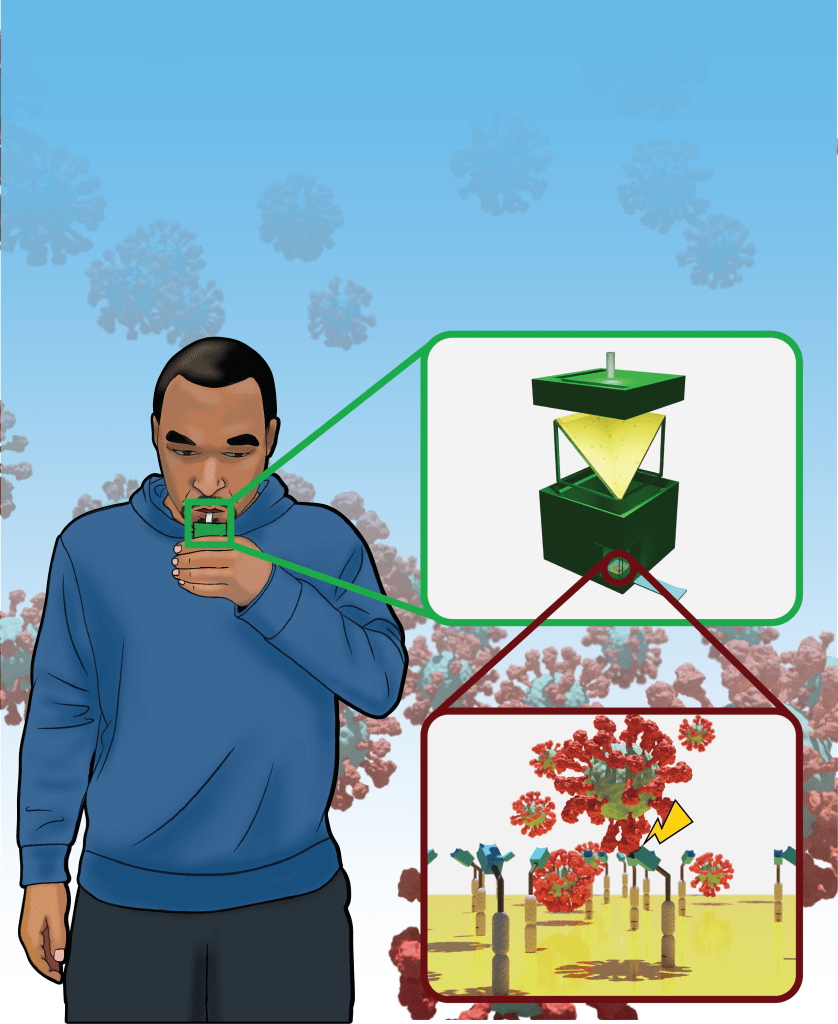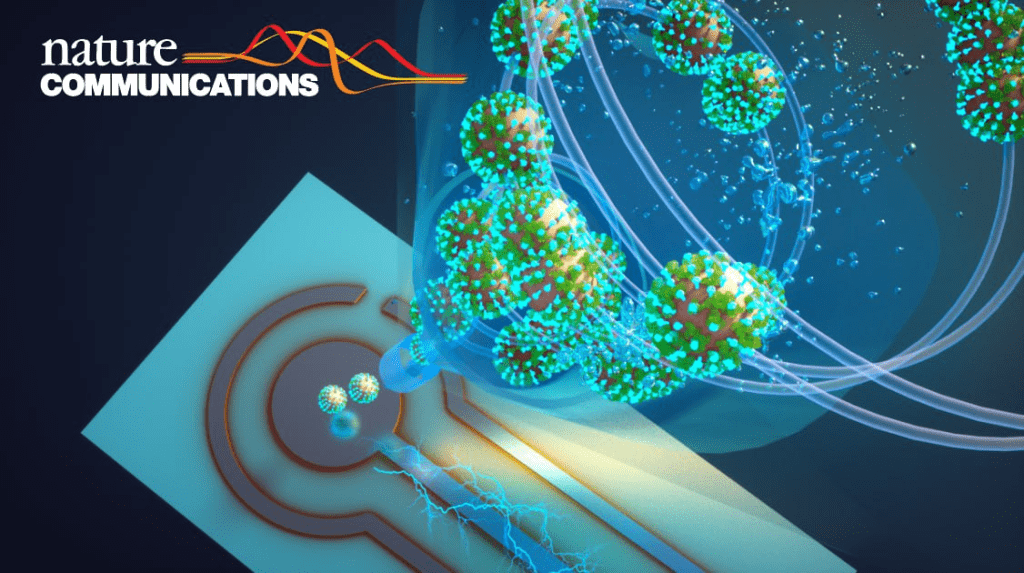SARS-CoV-2 in Human Breath
The Chakrabarty Group, in collaboration with the Washington University School of Medicine, are working on the development of quick and adaptable diagnostic tools for disease management during the COVID-19 pandemic. One project was on designing a Breath Aerosol Analyzer testing platform with potent applications for swift and accurate mass testing. We integrated an affordable collection device to sample patient breath aerosols and an ultrasensitive Micro-Immunoelectrode (MIE) Biosensor for detecting SARS-CoV-2 viral particles in exhaled breath.

SARS-CoV-2 in the environment
COVID-19 is a disease caused by Severe Acute Respiratory Syndrome Coronavirus 2 (SARS-CoV-2) that is primarily transmitted through aerosols. The rapid detection of the virus in real-time can help slow down the spread of the disease. Our team has developed a highly efficient bioaerosol sampler using wet cyclone sampling technology that can continuously monitor and sample airborne viruses. In collaboration with Dr. John Cirrito and Dr. Carla Yuede from the WashU School of Medicine, we have coupled this high flow biosampler with a llama-derived nanobody-based micro-immunoelectrode (MIE) biosensor that specifically targets the SARS-CoV-2 spike protein.
Aerosol Exposure Chamber
We are developing a system that allows mice to move freely while being exposed to particulate matter (PM) chemical components. This will help us investigate the potential link between PM and Alzheimer’s disease (AD) markers. We are using a state-of-the-art, real-time microdialysis setup and collaborating with Dr. John Cirrito and Dr. Carla Yuede from the WashU School of Medicine to design a mouse model that will enable us to study the effects of controlled PM exposure on AD biomarkers.
